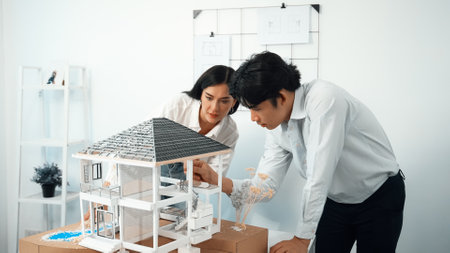1. Refresh Interior Paint
A fresh coat of paint is one of the easiest and most cost-effective ways to update a home’s look. Whether youre preparing to sell or just want to give your space a new feel, painting can dramatically transform any room with minimal investment. Best of all, it’s a DIY project that doesn’t require professional help if you take your time and follow basic steps.
Why Repainting Makes a Big Impact
Walls take up the largest visual space in any room, so even small changes in color can have a big effect. Fresh paint helps cover up scuff marks, stains, and signs of wear and tear, instantly making your home look cleaner and more maintained.
Choose Neutral Colors for Wider Appeal
When selecting colors, opt for neutral shades like soft grays, beiges, or warm whites. These tones not only make rooms feel larger and brighter but also appeal to more potential buyers if youre planning to sell. Bold or trendy colors may limit buyer interest, as not everyone shares the same style preferences.
Popular Neutral Paint Colors in the U.S.
| Paint Color Name | Tone | Best Used In |
|---|---|---|
| Agreeable Gray (Sherwin-Williams) | Warm Gray | Living Rooms, Hallways |
| Alabaster (Sherwin-Williams) | Soft White | Kitchens, Bedrooms |
| Revere Pewter (Benjamin Moore) | Greige (Gray + Beige) | Open Spaces |
| Swiss Coffee (Behr) | Creamy White | Bathrooms, Ceilings |
Tips for a Successful DIY Paint Job
- Prep properly: Clean walls and patch holes before painting.
- Use painters tape: Protect trim and edges for clean lines.
- Invest in quality tools: A good roller and brush make all the difference.
- Apply two coats: Ensures even coverage and long-lasting results.
This simple project can be completed over a weekend and has the power to completely refresh your home’s interior while adding real value without breaking the bank.
Upgrade Kitchen Cabinet Hardware
One of the easiest and most cost-effective ways to refresh your kitchen is by replacing outdated cabinet hardware. Swapping out old knobs and drawer pulls for modern, stylish pieces can instantly give your kitchen a fresh, updated look—without the need for a full remodel. This small DIY project not only enhances the overall appearance but also adds value to your home in a budget-friendly way.
Why Cabinet Hardware Matters
Cabinet hardware might seem like a minor detail, but it plays a big role in the kitchen’s overall aesthetic. Old or mismatched hardware can make cabinets look worn or outdated, while new hardware adds a polished finish that complements your kitchen’s style. Plus, this upgrade is something you can easily do yourself over a weekend with just a screwdriver and some patience.
Choosing the Right Hardware
When selecting new hardware, consider the color, finish, and style that will best match your existing cabinets and appliances. Popular finishes include brushed nickel, matte black, oil-rubbed bronze, and chrome. Think about the shape too—sleek bar pulls offer a modern feel, while classic round knobs suit traditional kitchens.
Popular Cabinet Hardware Styles
| Style | Description | Best For |
|---|---|---|
| Sleek Bar Pulls | Long and modern-looking handles | Contemporary or minimalist kitchens |
| Classic Round Knobs | Timeless and simple design | Traditional or farmhouse kitchens |
| Cup Pulls | Semi-circular pulls with vintage charm | Cottage or rustic-style kitchens |
| Square Knobs | Modern twist on the classic knob | Transitional or modern kitchens |
Tips for Installation
- Measure before buying: Make sure to check the hole spacing on your current hardware to avoid drilling new holes.
- Buy extra pieces: Always purchase a few extra knobs or pulls in case of damage or miscounting.
- Use a template: A hardware installation template helps ensure even placement across all doors and drawers.
- Tighten carefully: Don’t overtighten screws—this could crack wood or strip threads.
Estimated Cost & Time
| Item | Estimated Cost | Time Required |
|---|---|---|
| New Hardware (20-30 pieces) | $40–$100+ | A few hours (weekend project) |
| Screwdriver / Drill (if needed) | $0–$30 (if not already owned) |
This simple upgrade makes a noticeable difference in your kitchens look and feel. With just a small investment of time and money, updating cabinet hardware is an easy win when it comes to DIY home improvement projects that boost your homes value.
![]()
3. Enhance Curb Appeal
First impressions matter, especially when it comes to your home. Boosting your homes curb appeal doesn’t have to cost a fortune, and it can make a big difference in how people perceive your property’s value. Here are some simple, budget-friendly DIY projects that can enhance the exterior of your home:
🌸 Plant Flowers and Shrubs
A splash of color from flowers or neatly trimmed shrubs can instantly brighten up your front yard. Choose low-maintenance, seasonal plants that thrive in your local climate for the best results.
🎨 Paint the Front Door
A fresh coat of paint on your front door can give your home a whole new look. Bold colors like navy blue, red, or even yellow can create an inviting entryway that stands out.
🔢 Update House Numbers
Old or faded house numbers can make a home look dated. Swapping them out for modern, stylish numbers is an easy upgrade that adds polish and makes your address easier to find.
💡 Install Outdoor Lighting
Good lighting not only improves safety but also adds charm to your home at night. Solar-powered pathway lights, string lights, or wall-mounted fixtures are all great options that are easy to install without hiring an electrician.
Quick Comparison of Budget-Friendly Curb Appeal Projects
| Project | Estimated Cost | DIY Difficulty | Impact on Home Value |
|---|---|---|---|
| Planting Flowers | $20 – $100 | Easy | Moderate |
| Painting Front Door | $30 – $70 | Easy to Moderate | High |
| Updating House Numbers | $10 – $50 | Easy | Moderate |
| Installing Outdoor Lighting | $20 – $100+ | Easy to Moderate | High |
Tackling even one or two of these projects can give your home a more welcoming appearance and help increase its market value without breaking the bank.
4. Install a Backsplash
Adding a backsplash is one of the easiest and most affordable ways to upgrade your kitchen or bathroom. It not only protects your walls from water and grease but also adds a stylish focal point to the room. Peel-and-stick backsplash tiles have become incredibly popular among homeowners because they’re budget-friendly, simple to install, and come in a variety of designs that mimic real tile, stone, or even glass.
Why Choose Peel-and-Stick Backsplash Tiles?
- Budget-Friendly: Most peel-and-stick options cost significantly less than traditional tiles and don’t require grout or special tools.
- No Professional Help Needed: These tiles are perfect for DIYers of any skill level—just measure, cut, peel, and stick.
- Time-Saving: You can complete an average-sized kitchen backsplash in just a few hours.
Popular Areas to Install a Backsplash
| Room | Ideal Locations |
|---|---|
| Kitchen | Behind the stove, sink, or countertops |
| Bathroom | Above the vanity or around the mirror |
Design Tips
- Choose colors that complement your countertops and cabinets for a cohesive look.
- If your space is small, opt for lighter shades or reflective finishes to make it appear larger.
- Mosaic patterns or subway tile styles are timeless choices that appeal to many buyers.
Estimated Cost Breakdown
| Item | Average Cost |
|---|---|
| Peel-and-stick backsplash tiles (per sq. ft.) | $5 – $10 |
| Total cost for small kitchen (20 sq. ft.) | $100 – $200 |
This small investment can go a long way in boosting your homes visual appeal and market value—especially when potential buyers see updated kitchens and bathrooms without the need for major renovations.
5. Improve Energy Efficiency
Boosting your homes energy efficiency is one of the most practical and budget-friendly ways to add value, especially if youre planning to sell in the future. Many homebuyers today are eco-conscious and appreciate homes that help reduce utility bills. The good news? You don’t need a big budget or professional contractor to make impactful changes—there are several DIY projects you can tackle over a weekend that will make your home more energy-efficient.
Simple DIY Projects for Better Energy Efficiency
Here are some affordable DIY tasks that can increase your home’s energy efficiency while adding appeal to potential buyers:
| DIY Task | Estimated Cost | Benefits |
|---|---|---|
| Sealing Windows with Caulk | $5–$20 | Reduces drafts and prevents heat loss |
| Installing Weather Stripping on Doors | $10–$25 | Keeps indoor air in and outdoor air out |
| Upgrading Light Bulbs to LED | $2–$5 per bulb | Lowers electricity usage and lasts longer than traditional bulbs |
Why These Projects Matter
These small updates not only cut down on monthly utility bills but also signal to buyers that the home has been well-maintained. In many cases, these improvements can even be highlighted in property listings as “energy-saving features,” which can make your home stand out in a competitive market.
Pro Tip:
If you want to take it a step further, consider installing a programmable thermostat. It’s slightly more advanced but still manageable for most DIYers—and it adds another attractive energy-efficient feature for future buyers.


